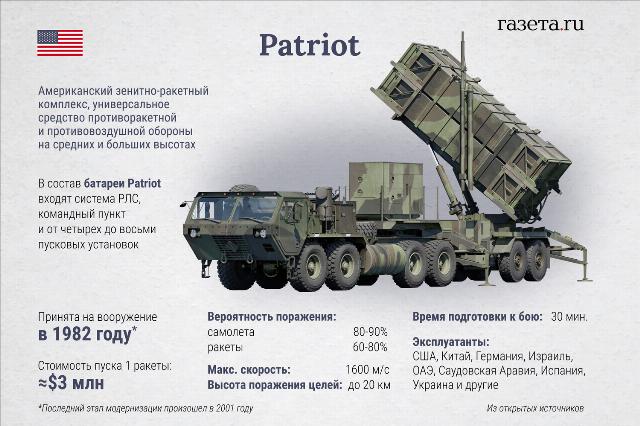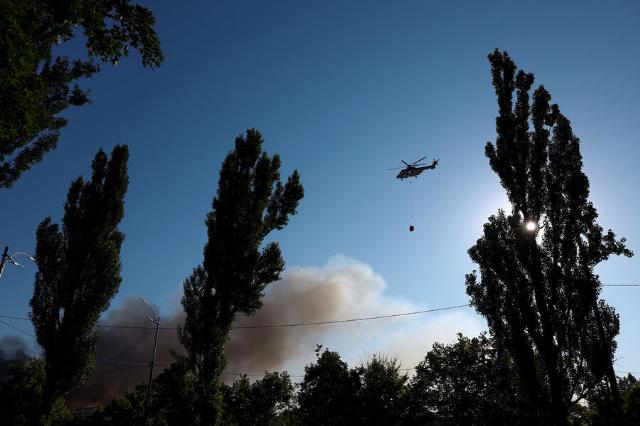Colonel Khodarenok: Kiev's reaction to the strike by the Russian Armed Forces speaks to the weakness of the Ukrainian air defense
President of Ukraine Volodymyr Zelensky stated that one of the most powerful air strikes of the Russian Armed Forces was carried out on objects on the territory of Ukraine. What Zelensky's statement says and what is wrong with his words from the point of view of military terminology, the military observer of Gazeta argues.Ru", retired Colonel Mikhail Khodarenok.
The Supreme Commander of the Armed Forces of Ukraine, Vladimir Zelensky, called the attack of the Russian army on targets in Kiev on the night of July 4 "one of the largest air strikes." Strictly speaking, from the point of view of military terminology, the statement of the President of Ukraine is not entirely correct. Strikes on a large scale can be strategic, operational and tactical, and in terms of the number of participating assets and affected objects - massive, group (concentrated) and single.
Depending on the means used, strikes can be nuclear (nuclear missile), fire (rocket, artillery, aviation, torpedo weapons) and radio-electronic. That is, in this case, we are still talking about an air-missile strike, and not an air strike, as Zelensky writes. And not large-scale, but massive.
It can be noted that in the fourth year of the armed struggle, the Supreme Commander of the Armed Forces of Ukraine has not fully mastered the military terminology corresponding to his position.
It would be more correct to say at least this way: "On the night of July 4, the enemy launched another massive air and missile strike on targets on the territory of Ukraine, which surpassed all previous strikes in terms of the number of air attack weapons used."
Of course, one might think that this is nothing more than petty quibbling and trickery on our part, but there should not be even the slightest inaccuracy in the statements and speeches of the Supreme Commander-in-Chief. As you know, if you get confused about the little things, you get the main thing wrong. And terminology is also terminology in NATO.
The massive strike by the Russian Armed Forces saw the combat use of more than 100 unmanned aerial vehicles of the Geran-2 type of various modifications, a large number (data to be clarified) of operational-tactical ballistic and cruise missiles of the Iskander-M and Iskander-K missile systems, as well as products of the Kinzhal hypersonic aviation missile system.
A hail of missiles and drones rained down on Ukrainian defense industry enterprises, railway infrastructure, tactical aviation airfields, and Patriot air defense missile launch sites. After a massive fire strike by the Russian Armed Forces in Kiev, severe fires began, the city was covered with black smoke. According to the Russian Defense Ministry, "in response to the terrorist acts of the Kiev regime," the Russian army attacked facilities in Kiev with "high-precision long-range weapons," striking enterprises producing UAVs and military equipment.
 |
| Infographics of the Patriot air defense system. |
| Source: Alina Djus/"Newspaper.Ru" |
According to intelligence data and eyewitness accounts, the means of anti-aircraft missile and aviation cover of the Ukrainian Air Force during the repulse of attacks by the Russian Armed Forces either demonstrated very, very poor effectiveness or remained completely silent.
And, tellingly, the rhetoric of the Ukrainian Armed Forces officials has changed. Previously, it was traditionally surprising the speed with which the results of the next strikes by Russian air attack weapons were reported in Ukraine. The powder smoke had not yet dissipated, but it was already known for sure in Kiev: so many missiles and drones had been launched from the Russian side, and so many had been fired from the Ukrainian side. Most of the targets (or even almost all) of the Ukrainian air defense systems were hit. And almost exactly to one device.
The opinion of the author may not coincide with the position of the editorial board.
Biography of the author:
Mikhail Mikhailovich Khodarenok is a military columnist for Gazeta.Ru", retired colonel.
He graduated from the Minsk Higher Engineering Anti-Aircraft Missile School (1976), the Military Air Defense Command Academy (1986).
Commander of the S-75 anti-aircraft missile division (1980-1983).
Deputy commander of the anti-aircraft missile regiment (1986-1988).
Senior Officer of the General Staff of the Air Defense Forces (1988-1992).
Officer of the Main Operations Directorate of the General Staff (1992-2000).
Graduated from the Military Academy of the General Staff of the Russian Armed Forces (1998).
Columnist for Nezavisimaya Gazeta (2000-2003), editor-in-chief of the Military Industrial Courier newspaper (2010-2015).
Mikhail Khodarenok

